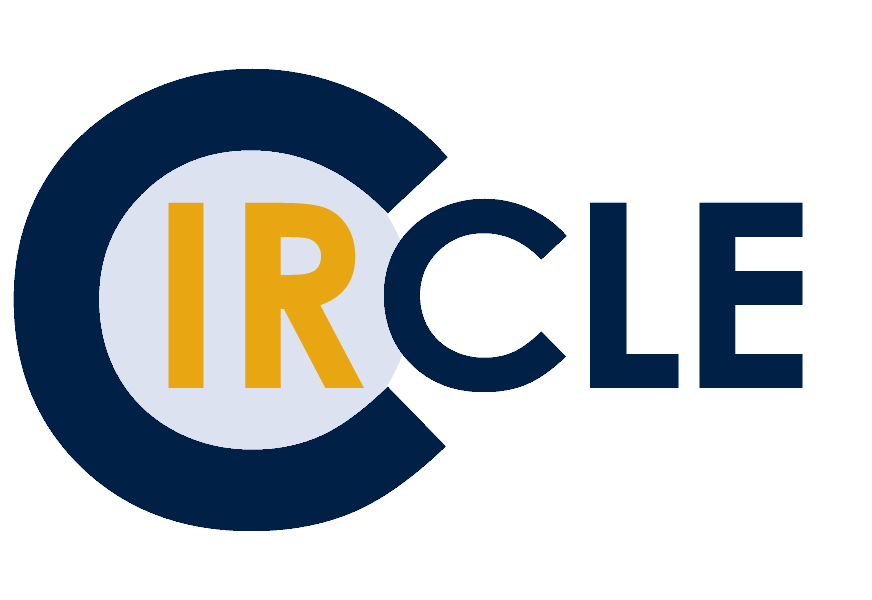
Photo courtesy: UBC Library Communications and Marketing
cIRcle is committed to providing persistent open access to an increasingly diverse range of scholarly resources in a variety of formats, subjects, and languages.
An example is the growing interest among graduate students and programs in expanding language representation in theses and dissertations. cIRcle is therefore often asked if materials can be submitted if they include non-English language or other specialized characters.
In short and in general, the answer is yes, though there are some considerations.
Read on to find out how cIRcle supports non-English and multilingual materials. Keep in mind that your program, Graduate and Postdoctoral Studies (UBC-V), and/or the College of Graduate Studies (UBC-O) may have other requirements for how non-English or specialized characters can be used or applied within your thesis or dissertation.
cIRcle Metadata : What Is It?
The primary tool used to describe content in cIRcle is called metadata. Metadata refers to information that describes a given resource, and is essential for finding, identifying, using, and sharing cIRcle items. It can also be used to aggregate items based on shared information (for example, items written by the same author).
See cIRcle Theses/Dissertation Metadata to learn more about metadata and its role in finding and using thesis and dissertations in cIRcle.
Which non-English characters are accepted?
Although English is the primary language used in cIRcle metadata, cIRcle strives for capture of representative metadata across languages.
cIRcle metadata can accept any characters within the Unicode standard that are UTF-8 encoded. This means that a vast range of diacritics, non-Roman, and specialized characters representing the world’s languages and codes can be captured in cIRcle’s metadata.
When you are ready to submit your thesis or dissertation, you will enter or select descriptive information about it (e.g. Author/Creator, Title, Abstract); this will form the cIRcle record metadata. In general, we recommend copying text from your thesis or dissertation into the appropriate fields, inclusive of non-English and specialized characters. In most cases, these will accurately display how you intended, to represent the language and/or symbolic content of your thesis or dissertation.
For example, your work may have a title written entirely in a non-English script, such as Jon Michael Robert Corbett’s PhD dissertation, which is written using Plains Cree syllabics:

The non-English script accurately displays in the “Title” metadata. A Romanized version and an English translation of the title has also been provided, which appear in the “Alternate Title” metadata.
Non-English characters can also be combined with English and displayed together in the same metadata field. In Zeng Yang’s PhD dissertation, the author included Chinese script alongside additional Romanized names of a prominent historical translator:

To see how diacritics in other languages appear in cIRcle, consult examples of non-English content in graduate theses and dissertations from UBC programs such as Asian Studies, French, Hispanic Studies, and Germanic Studies.
Keep in mind that during the submission process, you will also select the Language of your thesis or dissertation from a pre-set list of options. This will correspond to the language predominantly represented in the resource.
What about Non-Language Symbols and Characters?
Theses and dissertations in fields such as mathematics, chemistry, and physics may use specialized characters to represent other kinds of non-language content. For example, scientific notation and other symbols may be included to express equations and formulae.
These characters can also be accepted by cIRcle and displayed in the item’s metadata.
For example, in Restriction theorems and Salem sets by Kyle David Hambrook, specialized characters are displayed throughout the “Description” field:

See a few more examples of theses and dissertations in Physics and Mathematics that include specialized characters in their metadata.
Limitations
While cIRcle metadata can accept a wide range of non-English and other specialized characters, it is important to recognize there are technical limitations.
If you are unable to copy characters from your thesis or dissertation into the cIRcle record metadata, we recommend reviewing the Unicode code charts to find the corresponding character(s) there. Then, copy and paste the ones you would like to use into the intended field.
If you have difficulty finding certain characters within Unicode, then these should be transcribed to reflect the intended characters as closely as possible.
In some cases, certain characters may still not render accurately in the cIRcle metadata. Noting these limitations, cIRcle metadata aims to reflect the original content as much as possible. But overall, the primary source of information for cIRcle metadata will be the thesis or dissertation itself.
Next Steps and Key Takeaways
Once you’re ready to submit your thesis or dissertation, be sure to consult cIRcle’s theses and dissertations submission checklist.
In this post, we’ve discussed how cIRcle metadata is used to represent a range of non-English, multilingual, and specialized characters across theses and dissertations. But this guidance applies across all types of materials accepted by cIRcle.
Stay tuned for a future post for tips on how to find Non-English and multilingual theses and dissertations in cIRcle using Open Collections’ search and discovery features.
